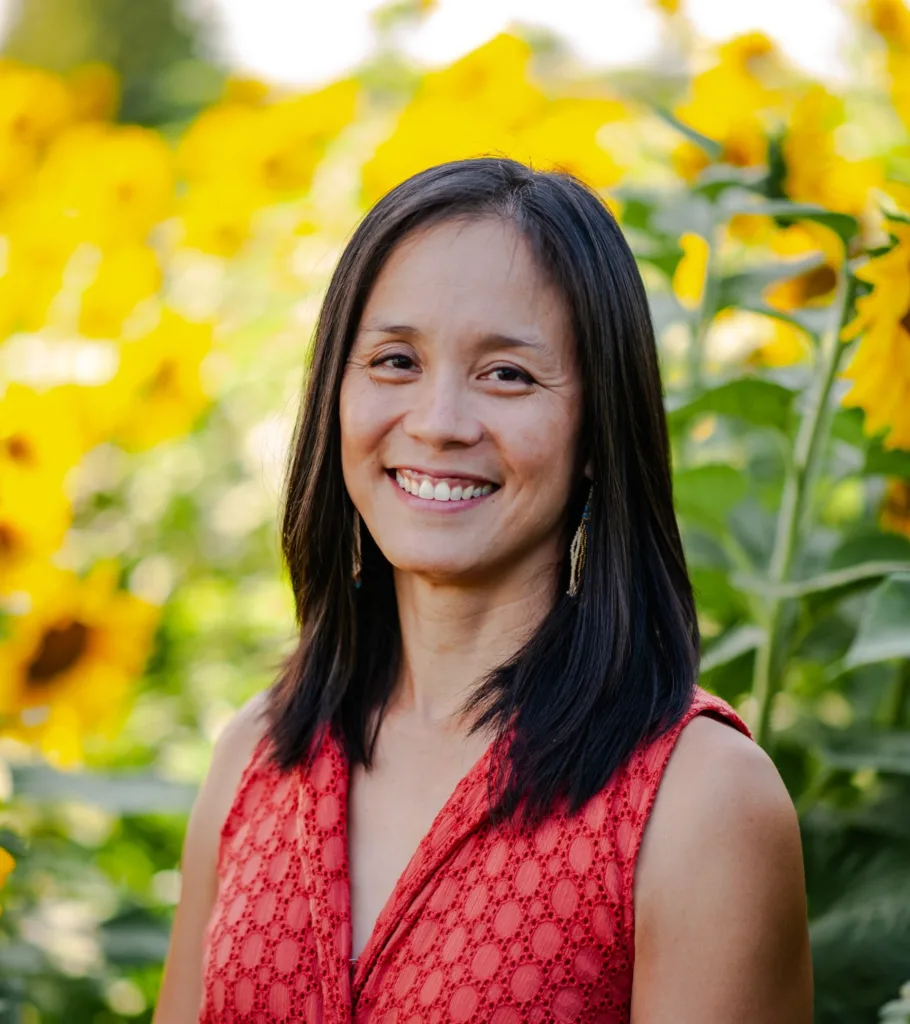
In January 2025, Wendy Yang was appointed Deputy Director for Research and Development at the Center for Advanced Bioenergy and Bioproducts Innovation (CABBI), succeeding Don Ort following his retirement. In this senior leadership role, Yang guides the Center’s overall R&D strategy and leads our collaboration with the other Bioenergy Research Centers (BRCs). A Professor of Plant Biology at the University of Illinois Urbana-Champaign, Yang previously served as CABBI’s Sustainability Theme Leader.
In this Q&A, Yang highlights her experience over the first six months and what she’s looking forward to in her new role.
Prior to taking this position, you spent a few years as the Sustainability Theme Leader. Can you tell us more about your journey to the Deputy Director of Research & Development?
I had the privilege of substantially contributing to the proposal that first funded CABBI in 2017, serving as a Sustainability Theme Deputy Leader through the renewal of CABBI, and then transitioning to the Theme Leader role in 2022. Through these roles I have helped shape research priorities and strategies for the Sustainability Theme in support of the Center’s mission, importantly listening to what Sustainability researchers voiced as the most important and exciting knowledge gaps to address. As the Center has matured, I increasingly looked for opportunities to further integrate Sustainability research with the Feedstock Production and Conversion Themes so that we could fully leverage our might as a large collaborative research center to make novel scientific discoveries. In my new role as Deputy Director of Research & Development, I am looking forward to getting to know the Feedstock Production and Conversion researchers better so that I can bring the approach that I used to lead the Sustainability Theme to the Center as a whole.
Have there been any mentors or role models along the way who have influenced your leadership approach? If so, how?
I feel fortunate to have had Evan DeLucia, our first CABBI Director, as a mentor since I began as an assistant professor at the University of Illinois in 2013. I am a very detail-oriented person, and he taught me how to see things from a 30,000-foot view, which is very important for having the vision to lead a big research center like CABBI. I have also benefited from observing Andrew Leakey lead CABBI as the Director, and for five years lead my Department of Plant Biology as Head, because he is such a forward-looking, strategic, and steady leader.
It’s been a few months since you transitioned into the Deputy Director role, so how have the first few months been?
I have been on the CABBI Executive Committee since the inception of the Center, so I assumed that I knew “how the sausage is made.” It’s been eye-opening to see how much senior leadership does behind the scenes, together with our Center Manager Celine Young, to keep our research enterprise running smoothly and to further increase the success of the Center in generating the knowledge and tools that will serve as the foundation of a vibrant bioeconomy.
You wear a lot of different hats in this role, but what would say are your primary responsibilities?
I view my primary responsibilities as being a partner to the CABBI Director in strategic planning for the Center, serving on the senior leadership team to help guide higher-level decisions for the Center, and working with my counterparts at our three sister Bioenergy Research Centers to coordinate collaborative efforts across the BRCs in terms of research, outreach, and other activities.
Are there any new directions/initiatives that you’re excited to prioritize in this new role?
I am excited to help the Center strategize for the upcoming open competition for the Bioenergy Research Center program. In particular, I would like to take stock of the knowledge, resources, expertise, and collaborations that we have developed over the past 7.5 years that we should leverage to position ourselves competitively.
What are you most looking forward to in terms of near- and long-term goals for the Center?
Our Center has gained a lot of momentum in laying the scientific foundation for the development of a bioeconomy, and I look forward to us continuing to build on that momentum. For example, we have developed the knowledge and tools to accelerate the design, built, test, learn cycle for increasing the lipid content and improving the resilience of CABBI crops as well as engineering the microbes that convert plant-derived molecules into valuable bioproducts. As we continue to innovate in this space, this will enable even faster progress toward financially viable and scalable plant and microbial technologies for the bioeconomy. Our development of BioSTEAM, an open-source software platform for rapid techno-economic analysis and life cycle assessment, has also been a game changer for setting research priorities and targets across all three CABBI themes. The expansion of features within BioSTEAM will play a critical role in helping us further explore the opportunity space for the bioeconomy.